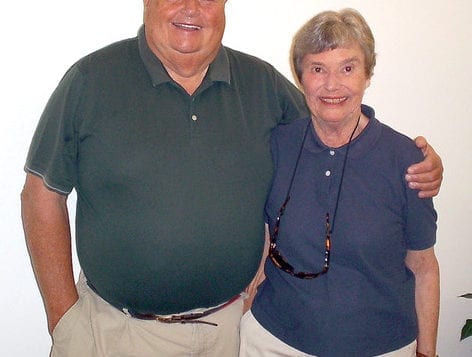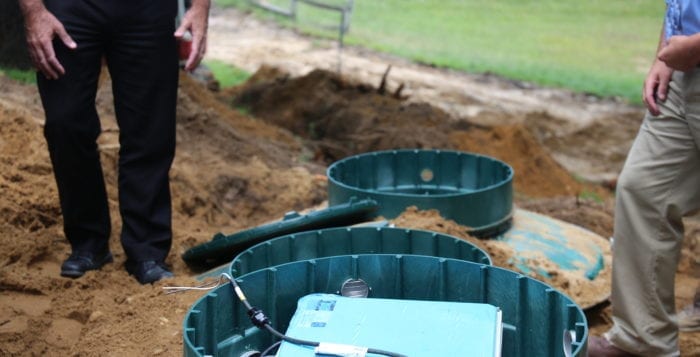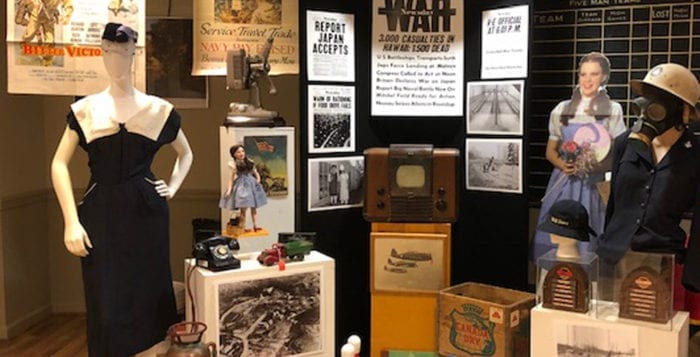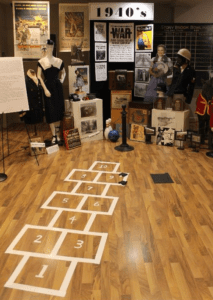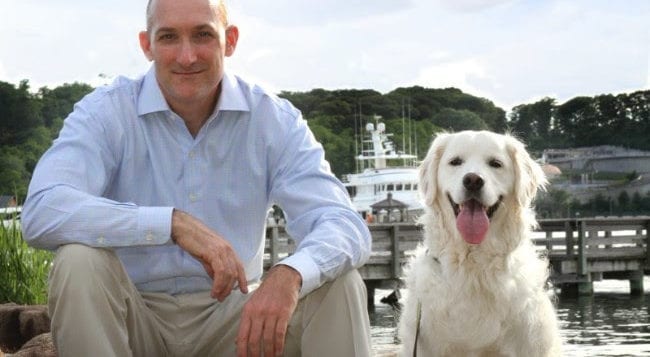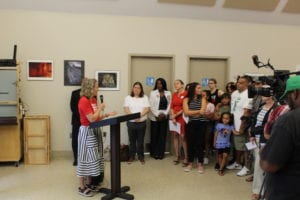By Donald McNaughton
Barbara and Bruce McNaughton, formerly of Setauket, died in Fort Myers, Florida, July 2 and July 24, respectively.
Barbara was 86 and Bruce was 85. Married for 64 years, they were residents of Setauket from 1960 to 2005, raising their three sons Cameron, Donald and Andrew there and contributing to the community they so loved. They will be laid to rest at the Setauket Presbyterian Church under a headstone simply marked “Home.”
Bruce Angus McNaughton
Bruce, an only child, was born in Brooklyn Jan. 14, 1934. His father was a broadcasting executive who specialized in turning around failing radio stations. This took Bruce at a young age to Ohio, West Virginia and Wisconsin, before he graduated from Ossining High School in Ossining, New York. He then attended the University of Illinois.
He met Barbara when they each had their first jobs after college at the McCann-Erickson advertising agency in New York City. After a stint writing for The New York Times, Bruce found his calling in the magazine business, selling advertising space. Following stops at Business Week, Look and McCall’s, he was hired by Time Incorporated in the mid-’60s to work for Life Magazine during its last years as a weekly publication. When Life ceased as a weekly in 1972, he moved to Time Inc.’s Fortune magazine, where he spent twenty years. At Fortune, he oversaw a new category, imported car advertising, growing it to be a source of significant revenue for the magazine. All in all, before retiring in 1994, Bruce spent more than 30 years at Time Inc. during its heyday as the leading magazine publisher in the United States, relishing the work, his colleagues, New York City and his place in the publishing world.
Bruce was nothing if not passionate about his many community involvements and his various pastimes. He helped to restore the sanctuary and steeple of the Setauket Presbyterian Church and worked on the committee to place the church on the National Register of Historic Places. He put his publishing experience to work to help establish a weekly newspaper in the Three Villages, The Village Times, now known as The Village Times Herald. He served on the board of the Stony Brook Community Fund, now the Ward Melville Heritage Organization. And he was a longtime board member of the Frank Melville Memorial Park, serving as its president and overseeing major renovations to the park’s buildings and grounds.
Bruce was an ardent lacrosse fan, voracious reader, Civil War history buff and lover of English cars, Winston Churchill, trains and all things Scotland. He was never more alive than when in the ocean surf or playing golf at St. George’s Country Club, where he and Barbara were members for 25 years.
Barbara Ann Hill McNaughton
Barbara, the eldest of four, was born in Queens March 4, 1933. Her father worked for New York State, helping to resettle returning World War II veterans. This took the Hill family to Washington, D.C., during part of her childhood, but she mostly grew up in the New York area. She attended William Smith College in Geneva, New York, and graduated from the University of Vermont.
After meeting and marrying Bruce in New York City, Barbara gave birth to Cameron, the first of their three boys, in 1955. With the arrival in 1959 of their second, Donald, the young family moved east from New York City to Setauket, where Barbara’s parents kept a summer cottage on West Meadow Beach. The couple added a third child, Andrew, in 1963.
During these childrearing years, Barbara received her master’s degree from Stony Brook University and later worked in the library there for many years. She served as president of the Play Groups School in Old Field and was an elder and longtime choir member of the Setauket Presbyterian Church.
Barbara was a boundless reader, enjoyed The New York Times crossword puzzle and loved sitting at the Brookhaven Beach Club with her friends. She was a fan of many sports, played tennis and golf and enjoyed watching baseball, Derek Jeter and Tiger Woods in her later years. She drove a stick well, and loved to watch her sons play lacrosse. Above all else, she was a devoted mother.
Upon leaving Setauket in 2005, Barbara and Bruce moved to Shell Point, a retirement community outside of Fort Myers where they quite happily spent their remaining years.
In addition to their three sons, Barbara and Bruce leave behind two daughters-in-law, Karen Walsh McNaughton and Alison Pyne McNaughton, and five grandchildren: William Walsh McNaughton, Robert Cameron McNaughton, Alexander Gilchrist McNaughton, Holloway Elise McNaughton and Katherine Ann McNaughton. They were thrilled to live to see the birth of twin great- grandchildren, Charlotte Reilly McNaughton and Cameron Walsh McNaughton. Barbara is also survived by a sister, Jane Hill Burr, and a brother, David C. Hill.
A private family interment will be held this fall. In lieu of flowers, donations may be made to Shell Point for the benefit of the Waterside Health Center.

